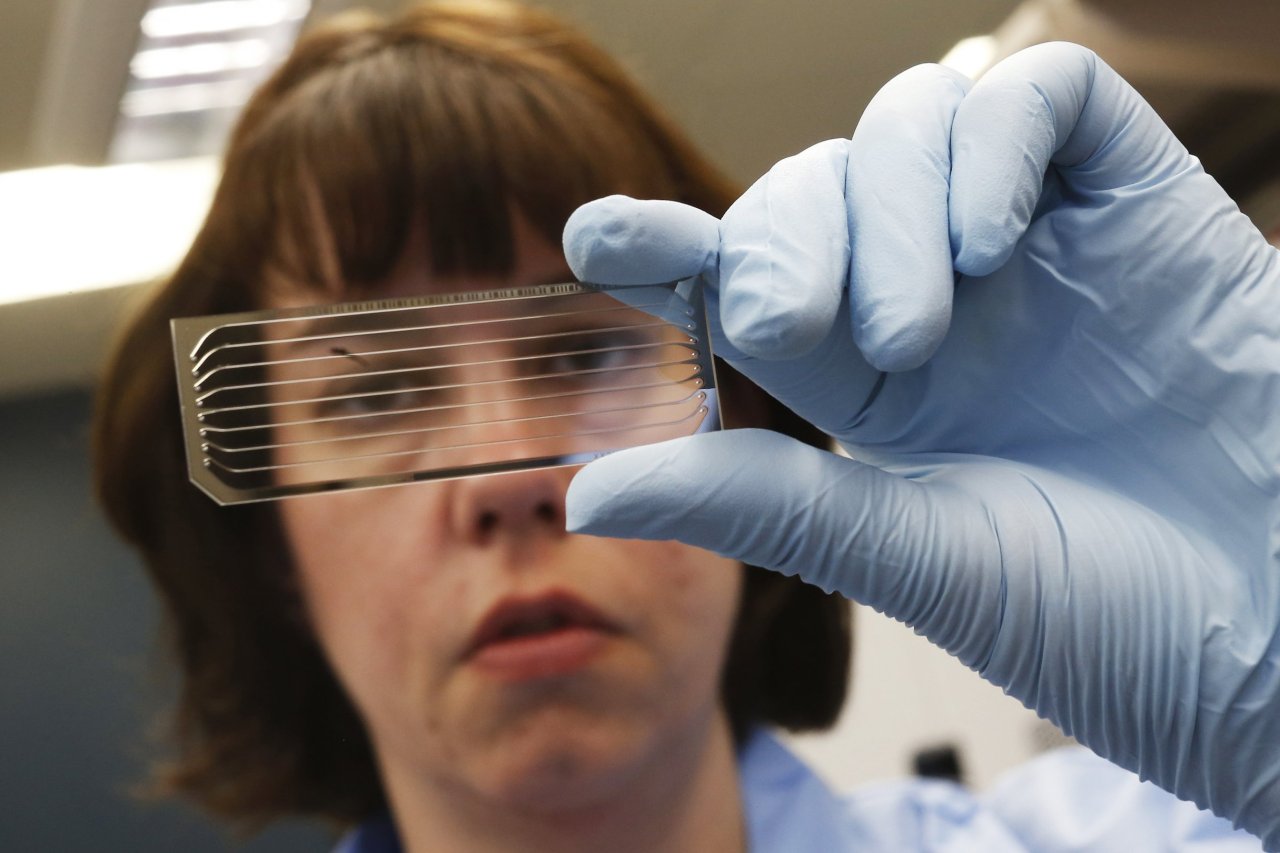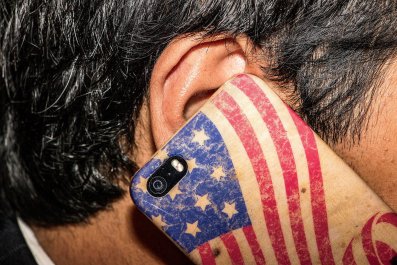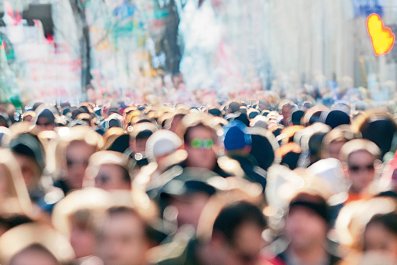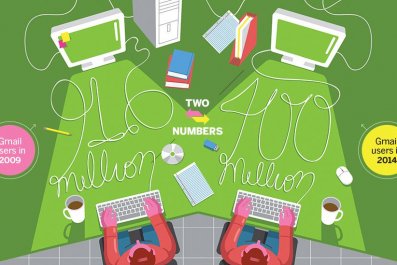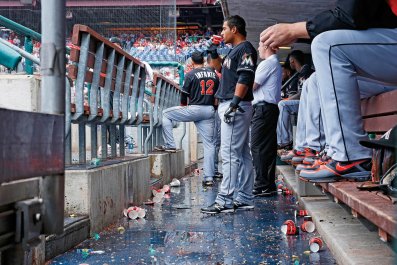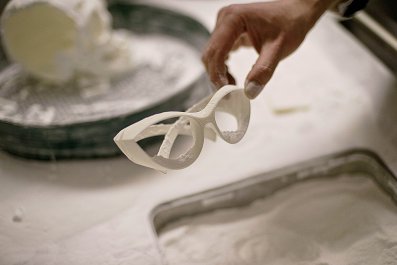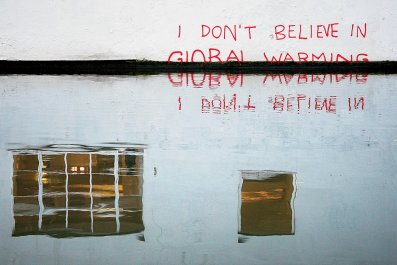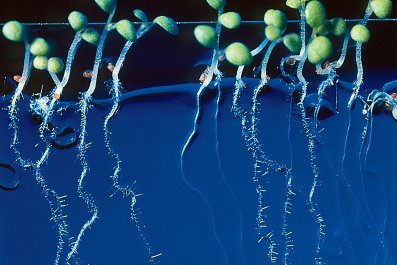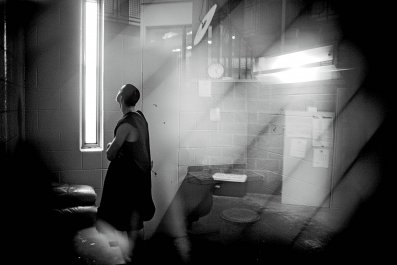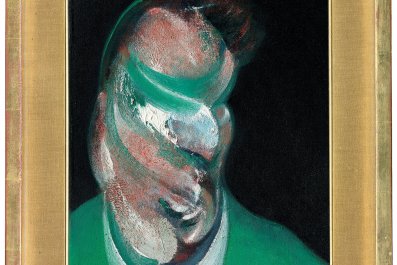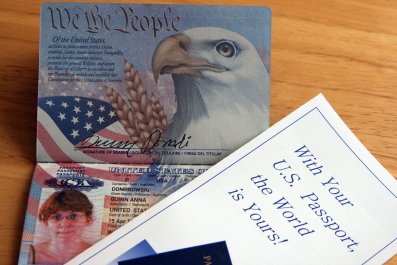In a corner of Genspace, a community biology lab in Brooklyn, New York, a woman in jeans and a T-shirt splices the DNA of a bioluminescent jellyfish into the genes of an E. coli bacterium to make living wallpaper that glows. Across the way, five high school students cluster around a whiteboard, outlining their plans to build an organism that senses arsenic in drinking water. They are but a few of the biohackers, teachers, librarians and artists who have gone rogue. They gather in a handful of public labs across the US to play with organisms' source codes and make DNA misbehave.
Biohacking has come a long way since a handful of science geeks began playing with bacterial DNA in their basements in the 2000s. Today, the products of do-it-yourself biology come out of closet laboratories and into the hands – or backyards – of consumers. It is the era of crowd-sourced science, in which almost anyone can make a new creature. Last year, a team of entrepreneurs created a glow-in-the-dark plant engineered with genes from bioluminescent bacteria; this year, a college undergraduate in Brooklyn is working to create plants that would survive an enormous dose of radiation and help clean up nuclear disasters or even colonise another planet.
At a communal table outside a glass-walled laboratory at Genspace, a woman greets me, introduces herself as Ellen Jorgensen and hands me a cotton swab. She tells me to rub the inside of my cheek with the swab. In the course of a few days, Jorgensen explains, I'll open up my cells and find out what secrets lie inside my genes. Each of these cells contain everything from my ancestors' migration story to my susceptibility to certain diseases.
In a previous life, Jorgensen, who has a doctorate in molecular biology, worked as a biotechnology researcher for a company looking for ways to more easily detect tobacco-related lung disease. Now she's a bio-hacker: she teaches people how to do biology outside the confines of a traditional lab. Jorgensen says that learning about my DNA will be my first step toward joining the club. If I can manage to isolate my genes, I can use the same technique to isolate the genes of other organisms, such as bacteria or plants. As she's talking, I wonder: could I help create the first Martian plants?
In order to access the DNA inside my mouth cells, I have to boil them, a process that breaks open the cells and spills their contents like an overturned bowl of spaghetti. After transferring my cells to a small plastic vial, I place it in a vat of water and set it to boil. After a few minutes, I turn off the heat, let it cool, and transfer it to a centrifuge where I let it spin. When I take out my vial and hold it up to the light, a tiny white pebble clings to the bottom. "That's your source code right there," says Jorgensen. "That's everything that makes you, you."
Two years ago, Brooklyn artist Heather Dewey-Hagborg came to Genspace to see how much she could learn about a stranger using only a tiny sample of DNA. So she roamed the streets of New York City collecting cigarette butts and discarded gum and brought the bits of saliva-covered detritus to Genspace.
Using the same DNA-isolation process Jorgensen took me through, Dewey-Hagborg culled the genetic material from her samples. She wanted to know what these strangers looked like, so she focused on the parts of DNA that code for physical traits. She could decipher everything from someone's gender to his or her hair and eye colour, skin shade, nose width and distance between eyes. Then she used a computer program to build a three-dimensional model of each stranger's face and a 3D printer to print them. Although the faces were not an exact replica, they shared what she calls a "family resemblance". When Dewey-Hagborg finished the project, she says she was surprised – and disturbed – by how much she could find out about a person she'd never met.
"I went into this not knowing how much I'd be able to find out about a person from a hair or a cigarette butt, and I came out feeling really concerned," says Dewey-Hagborg. "I became really fascinated with this idea of genetic privacy."
That fascination fuelled her latest project, a liquid spray that erases someone's genetic trace. The solution, which includes two sprays, costs $99. The first liquid is a strong cleaning agent that destroys most of the discarded DNA. The second is a blend of foreign genes designed to scramble any remaining genetic trace. Dewey-Hagborg thinks people with genetic conditions will use the spray at worksites or job interviews to prevent discrimination. "When anyone, anywhere can do this kind of work and look at your DNA, this becomes a necessary part of life," she says.
Jorgensen led me through the process that enabled me to look at my own DNA, to find out if I had a special mutation that would make me more resistant to certain forms of HIV. She used a piece of equipment that looked a little like a photocopier. The machine used heat – and -special enzymes that help the strands of DNA reassemble after they break apart – to copy my genes. Then I looked at the tiny strands of genetic material on a black light. A longer strand would mean I was mutation-free: anyone who has inherited the mutation is missing a chunk of genetic material and thus has a shorter strand of that DNA segment. If someone gets the mutation from both parents, she is missing a bigger chunk – and is thus twice as resistant to some types of HIV. Jorgensen and I scanned my DNA for the mutation that would make me more HIV resistant. "Looks like you're normal," she said.
On a whiteboard just outside the tiny lab where I'd run my genetic test, Jorgensen uses a thick, coloured marker to draw a large circle. Bacteria, she explains, contain round molecules of DNA called plasmids that reside in the cell apart from its regular genetic material. Scientists prize the circular "genetic workhorses" for their versatility: they can be used to transfer genes from one organism to another with a microscopic cut-and-paste job. "The important thing is the system is all the same," she says. "That's why you can put a jellyfish gene in a vial of E. coli and make it glow."
Biohackers have found hundreds of such combinations that survive lab tests. As a result, watchdog groups are concerned about the biohacked organisms' potential for harm. Even if they don't intend mischief, biohackers now have the power to widely disseminate products that have not been tested for negative effects.
Shortly after a team of entrepreneurs in San Francisco announced plans to market the first biohacked glow-in-the-dark plant in 2013, a technology watchdog group named ETC petitioned the US Department of Agriculture to block the project. But the federal regulator told the ETC it was not equipped to regulate it.
In the course of a few months, the glowing plant team raised close to $500,000 for their project – far more than their $65,000 goal. The team is set to ship 600,000 of the glowing seeds to people who supported the project. The widespread dissemination of these biohacked plants could have unforeseen consequences. In its literature on the dangers of biohacking, ETC states, "Without proper safeguards, we risk letting synthetic organisms and their products out of the laboratory with unknown potential to disrupt ecosystems, threaten human health and undermine social, economic and cultural rights."
Unlike explosives, the supervision of biological agents is patchy. Nevertheless, these agents are kept in high-security labs, far out of the reach of garage biologists. Even if a biohacker were to get access to one of these labs, says William Daddio, Georgetown University sociology professor who teaches courses in bioterrorism, she would likely harm herself before she would be able to harm others. Unlike managing a bacterium, which most biohackers can learn how to do in a few days, growing and maintaining a virus – which requires a host to survive – is far more difficult.
"If you're worried about some guys in a garage, that's not really the problem," says Daddio. "It would have to be people in a high-level lab."
Genspace biohacker Yuriy Fazylov is experimenting with genetically engineering plants to survive in high-radiation atmospheres – on Earth or in space. This involves splicing a radiation--resistance gene found in fungus into the DNA of a small flowering weed. On Earth, Fazylov says, the plants could help repair large swathes of land damaged by radiation from nuclear disasters. If deployed in Fukushima, Japan, for example, the plants could help restore the balance of oxygen and carbon dioxide in the atmosphere and eventually encourage other forms of life, such as bacteria or insects, to return to the barren land. In the same way, the plants could also help us colonise other planets. Fazylov sees huge potential to market the project in the next few years, and he isn't too worried about safety. "I have looked into the commercial aspects of this," he says. "My plan is to make it first and ask questions later."
When it came time for me to splice together a new creature, I settled on making glowing bacteria. After mixing together a solution of E. coli DNA, water and the enzymes that would tell my new genes where to go, I placed it in a chilled solution of calcium chloride – to break open its cell walls – and added genes for bioluminescence from a marine bacterium. Then, I dunked the vial in hot water – the temperature shock would encourage the bacteria to join, creating a single new organism.
A few days later, I took my dish out of the incubator where I'd left them to grow and slid it onto an ultraviolet light in the corner of the lab. When I flipped on the switch, a little colony of lime green cosmic dots appeared. They were beautiful and, in the confines of their plastic dish, looked harmless.



